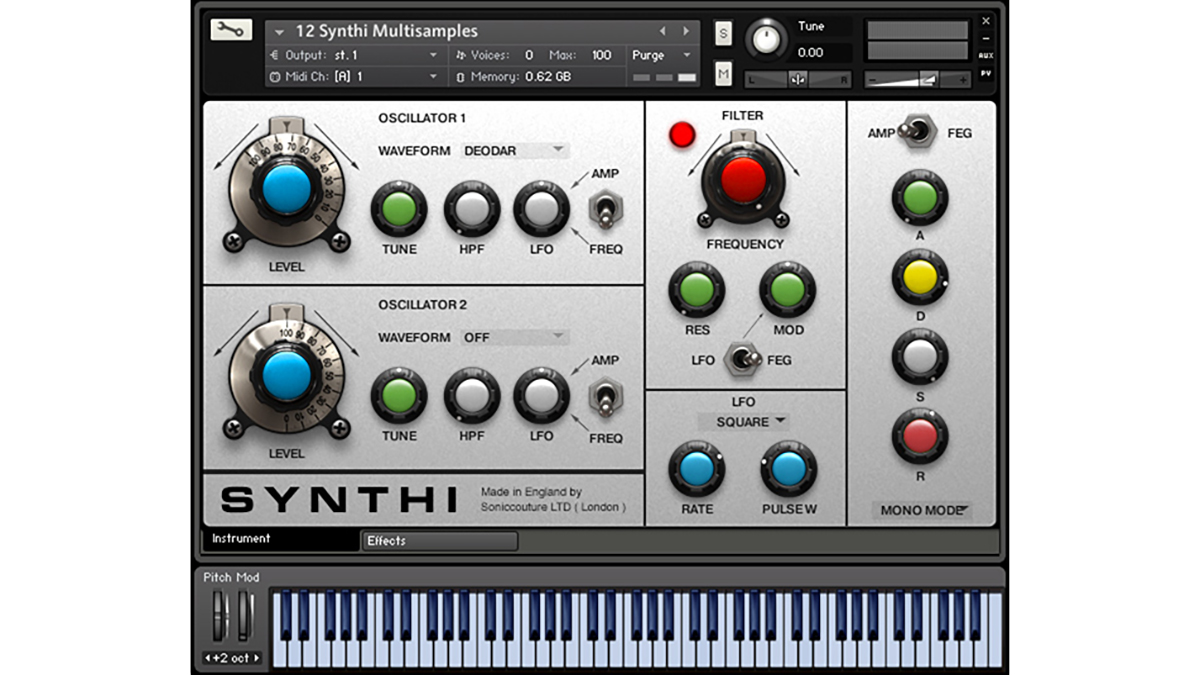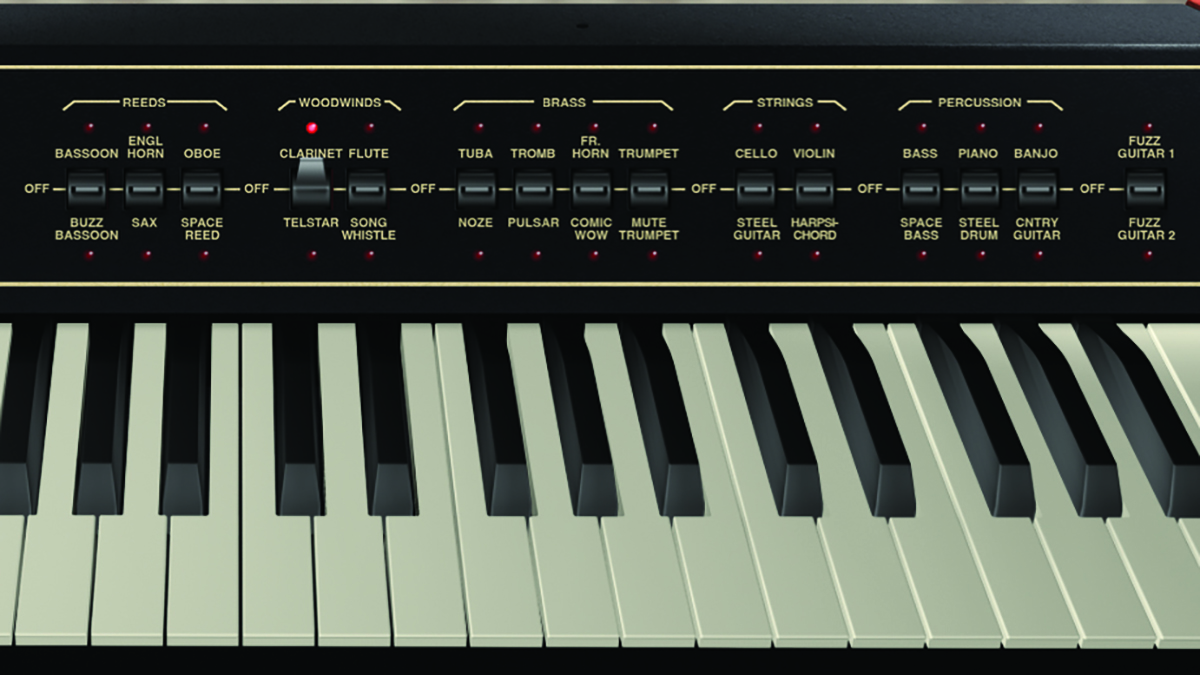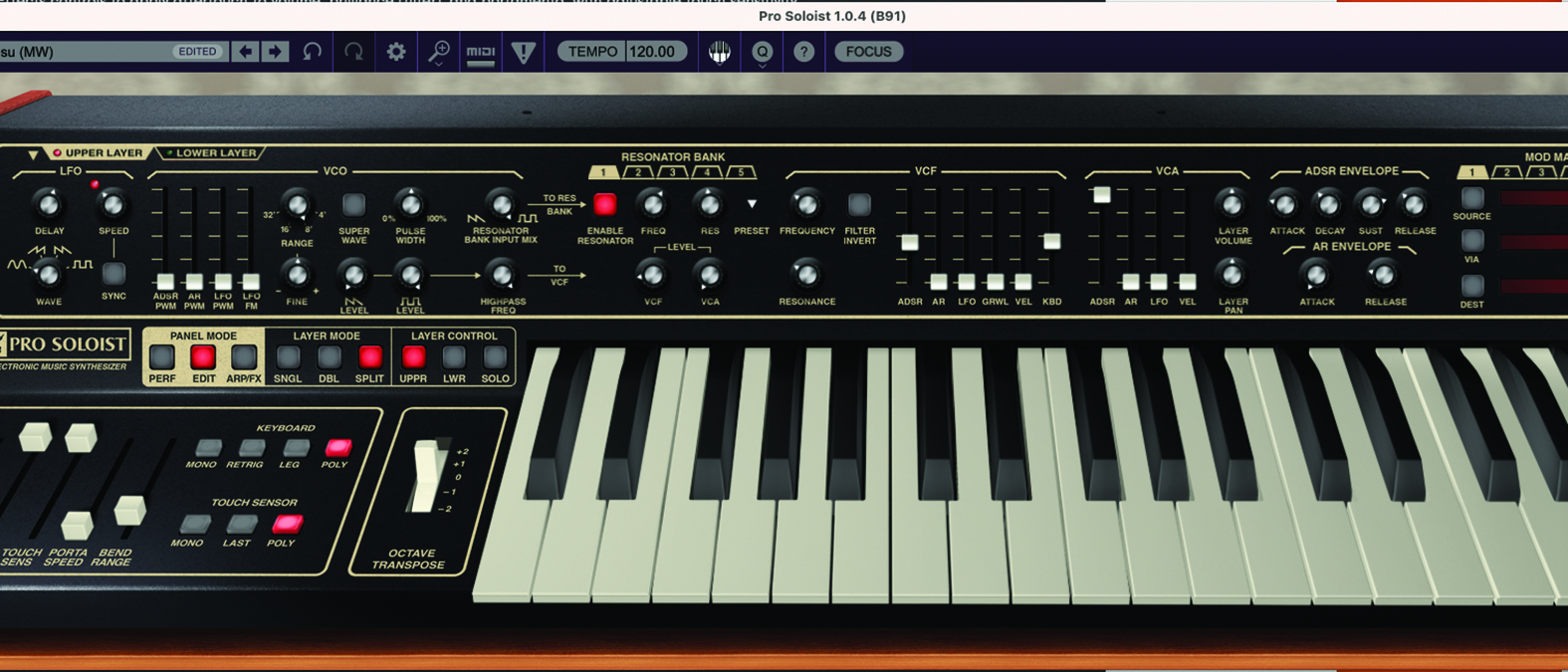MusicRadar Verdict
Cherry Audio is on a crusade, providing superbly different synths at attractive prices. An incredible gem; not to be missed.
Pros
- +
Surprisingly versatile with real hidden depths.
- +
The filter/resonator section is a complete treasure trove of sonic colour.
- +
Stunning effects section.
- +
Focus mode great for smaller screens.
Cons
- -
We’re going to struggle here!
MusicRadar's got your back
Cherry Audio Pro Soloist: What is it?
There was a time when the DAW du jour was a home organ, nestling in the corner of your lounge, waiting for Uncle Larry to spin a tune. But what would add a synthetic dimension to all those Bossanovas and Cha-Chas? A lead-line synth from Alan Robert Pearlman.
The ARP Pro Soloist came two years after its original sibling, the Soloist. Originally designed as a synthetic string, wind and brass solo section, to nestle on top of your home organ, the ‘Pro’ model refashioned the preset original to include editable control. It’s therefore fitting that Cherry Audio has not only adopted the Pro Soloist for its latest software reincarnation project, but in true Cherry style, increased its potency exponentially.

Cherry Audio Pro Soloist: Performance and verdict
The software Pro Soloist journey begins with a hearty collection of the original sounds, accessed through the Performance panel page. The quality of the analogue modelling is exemplary; the sense of nostalgia is heart-warming, providing a simple period-piece which could prove useful in certain settings. However, that’s a mere entrée to the main event.

• Sonic Couture The Attic 2
18 characterful synths including curios reminiscent of the Pro Soloist (Kontakt player required)
• Korg miniKORG 700S
Korg’s software version of the classic oozes charm; and you get a host of virtual effect pedals!
Flick over to the Edit page and you’ll find that you have immediate access to the nuts and bolts of each sound. Despite its humble origins, there’s nothing simplistic about the output. We’re in the subtractive domain, where the signal begins within the VCO section. Two volume pots labelled Saw and Square allow the blending of the initial signal, alongside additional features; the Saw can be multiplied into a SuperSaw, while the Square can be pulse-width modulated, either manually or from a LFO or Envelope source.
The signal is then uniquely routed to a high-pass filter, followed immediately by a Resonator Bank, where five sets of exceptionally rich resonators may be applied to colour the signal. It’s at this stage that the Resonators input signals from the filter or amplifier sections, inducing feedback which injects some amazing colouration into proceedings.
Adding to this sonic character, the filter bank can create exceedingly throaty and organic filter colours, and that’s before it even reaches the main filter section, which supplies a beautifully modelled 4-pole ARP filter. There are numerous filter modulation sources, which include either envelope, LFO and velocity. In true ARP fashion, two envelopes are supplied; one full ADSR, and a more simplistic AR envelope, much like other ARP synths, such as the Odyssey or 2600.
Turn the page
If you had been hoping to take your modulation programming further, it’s then possible to turn to the Modulation Matrix, which allows the comprehensive routing of every conceivable source to one of 58 destinations. You can also route via performance controls, if you’re looking for momentary activation from a mod wheel or similar control element.
You also have the option to work in single, double (layered) or split modes. As you go on to access these latter modes, a lower panel will appear, duplicating the controls for a second round of programming, upon selection of the appropriate layer.
The third and final page exposes an equally comprehensive set of effects and an arpeggiator. Included effects range from phasers and flangers to distortion, delay and reverb. These all have an extensive armoury of control, to sculpt the back-end output.

Banking the filters
We’re all used to the common concepts of subtractive synthesis, where you take a harmonically rich source and send it through a filter, removing the harmonics that you don’t want to hear. Sure enough, Cherry’s Pro Soloist supplies both a beautifully wispy high-pass filter, along with an incredibly weighty 24dB low-pass filter.
Even at this more simplistic end of business, the attention to the modelling of the filter weight is impressive, resulting in a very employable sound. However, the Resonator Bank adds another huge dimension, allowing the creation of up to five different harmonic characteristics, which then feed the low-pass filter. This is one of the secrets of the machine’s design, as it allows the highlighting of certain harmonics, in order to help replicate the sounds of acoustic instruments. This was useful in a pre-sampling era, but in contemporary hands it’s more of a creative component that can bring something unique to your sound.
More solo!
Cherry Audio has included the original synth’s name and branding in this marvellous recreation, but the flipside is that that in itself may promote a small amount of confusion. The good news is that you can use Pro Soloist as ARP intended, as a monophonic machine, with acoustic similarities and tendencies, but you can also open up to full polyphonic operation, with broad-ranging editing, which is an unexpected and welcome surprise. Armed with 450 presets, Pro Soloist has the capacity to impress with its scope for diverse sounds and creativity. You might even say that it’s actually less of a soloist and more of an almighty chorus.
MusicRadar verdict: Cherry Audio is on a crusade, providing superbly different synths at attractive prices. An incredible gem; not to be missed.
Cherry Audio Pro Soloist: Hands-on demos
Cherry Audio
Audio Tech TV
Alex Reid
CatSynth TV
Cherry Audio Pro Soloist: Specifications
- macOS 10.13 or above. macOS 13 Ventura supported. 64-bit required. Native Apple M1 or greater processor support, including Ultra. 3.4 GHz Quad-Core or M1 CPU with 8GB of RAM recommended.
- Windows 7 or above (including Windows 11), 64-bit required. 3.4 GHz Quad-Core computer with 8GB of RAM recommended.
- CONTACT: Cherry Audio
Roland Schmidt is a professional programmer, sound designer and producer, who has worked in collaboration with a number of successful production teams over the last 25 years. He can also be found delivering regular and key-note lectures on the use of hardware/software synthesisers and production, at various higher educational institutions throughout the UK
“Excels at unique modulated timbres, atonal drones and microtonal sequences that reinvent themselves each time you dare to touch the synth”: Soma Laboratories Lyra-4 review
“I used everything I knew about music”: How Green Day exceeded expectations with their most ambitious song
YouTube just added AI tools that makes musicians, library music and video editors redundant











